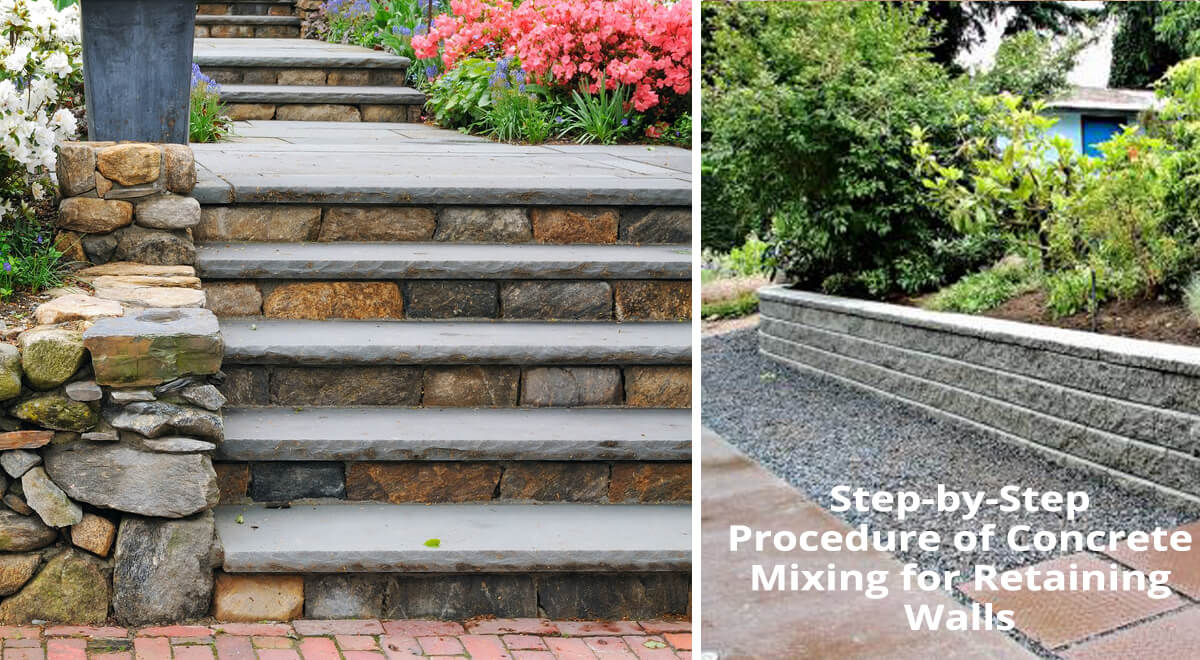Step-by-Step Procedure of Concrete Mixing for Retaining Walls
TweetBuilding a retaining wall requires careful planning and proper execution, especially when it comes to mixing and pouring the concrete. In this step-by-step guide, we will outline the procedure for creating concrete specifically for retaining walls. Following these steps will help ensure a strong and durable foundation for your retaining wall project.
Step 1: Gather the Materials and Tools
Before starting the concrete mixing process, gather all the necessary materials and tools. These typically include:
- Cement: Choose the appropriate type of cement based on your project requirements.
- Aggregates: Use a combination of coarse and fine aggregates, such as sand and gravel.
- Water: Have a sufficient water supply for mixing the concrete.
- Mixing Container: Select a clean, sturdy container to hold and mix the concrete.
- Measuring Tools: Use a measuring cup or bucket to accurately measure the materials.
- Mixing Tools: Have a shovel or hoe for mixing the concrete.
- Safety Gear: Wear gloves, safety glasses, and a dust mask to protect yourself.
Step 2: Calculate the Concrete Mix Proportions
To ensure the desired strength and consistency of the concrete, calculate the appropriate mix proportions. This involves determining the ratio of cement, aggregates, and water. The specific proportions may vary depending on the project specifications and the type of cement being used. Consult the cement manufacturer's guidelines or consult with a professional to determine the correct mix proportions.
Step 3: Prepare the Mixing Container
Clean the mixing container to remove any dirt or debris. This will help ensure a clean and uncontaminated mix. Additionally, moisten the container slightly before adding the ingredients. This can prevent the concrete from sticking to the container during the mixing process.
Step 4: Add the Materials
Begin by adding the measured amount of aggregates (sand and gravel) into the mixing container. Gradually add the cement while continuously mixing the materials. Use a shovel or hoe to thoroughly blend the aggregates and cement until they form a uniform mixture.
Step 5: Gradually Add Water
Slowly add water to the mixture while continuing to mix. It is important to add the water gradually to achieve the desired consistency. Avoid adding too much water at once, as this can make the concrete too runny and weaken its strength. Keep mixing until the water is evenly distributed and the mixture reaches a workable consistency.
Step 6: Check the Consistency and Adjust if Needed
Once the concrete is mixed, check its consistency. The ideal consistency for retaining wall concrete is similar to a thick paste that can be easily spread and molded. If the mixture is too dry, add small amounts of water and continue mixing until the desired consistency is achieved. Conversely, if the mixture is too wet, add small amounts of cement and aggregates to balance it out.
Step 7: Mix Thoroughly
Continue mixing the concrete for a few more minutes to ensure that all the materials are well incorporated. Pay attention to any lumps or clumps and break them apart during the mixing process. A consistent and homogeneous mixture is crucial for the strength and durability of the concrete.
Step 8: Use the Concrete for Retaining Walls
Once the concrete is thoroughly mixed, it is ready for use in building the retaining wall. Pour the concrete into the prepared formwork or directly onto the excavated area where the footings will be placed. Ensure that the concrete is evenly distributed and compact it using a trowel or shovel. Level the surface and smooth out any irregularities.
Step 9: Curing and Drying
After pouring the concrete, it is important to allow it to cure and dry properly. Cover the concrete with a curing compound or damp burlap to retain moisture and prevent it from drying too quickly. Follow the recommended curing time provided by the cement manufacturer or consulting with a professional.
Step 10: Maintain and Inspect
Once the concrete has cured, regularly inspect and maintain the retaining wall and its concrete footings. Look for any signs of cracking, shifting, or deterioration. Address any issues promptly to prevent further damage. Keep the surrounding area clean and free from excessive moisture or vegetation that could affect the stability of the wall.
By following this step-by-step procedure for mixing concrete, you can ensure a solid foundation for your retaining wall. Remember to consult with professionals, adhere to local regulations, and prioritize safety throughout the construction process.

